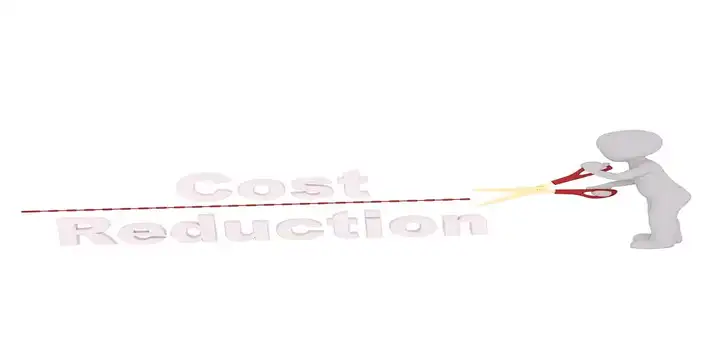- Cost planning
- Cost Analysis
- Cost management Techniques
- Externally oriented Cost Management Techniques
- Relevant costs
- Short term decisions
- Risk and Uncertainty
- Linear programming – graphical method
- Linear programming the simplex method
- Multi Product CVP Analysis
- Pricing decisions and Pricing strategies
- Budgetary Control
- Performance Evaluation
- Measuring performance in divisionalised businesses
- Transfer pricing
The value chain
The sequence of business activities by which, from the perspective of the end user, value is added to the products and services produced by an entry’.
Activities
Activities are the means by which an organisation creates value in its products.
According to Porter, the activities of any organisation can be divided into nine types and analysed into a value chain. A firm which performs the value chain activities more efficiently, and at a lower cost, than its competitors will gain competitive advantage.
It is necessary to understand how value chain activities are performed and how they interact with each other. The activities are not just a collection of independent activities but a system of interdependent activities in which the performance of one activity affects the performance of other activities
The activities which comprise the value chain are as follows:
Primary activities
Primary activities are directly related to production, sales, marketing, delivery and service.
- Inbound logistics – which entail receiving, storing, materials handling, warehousing, inventory control, vehicle scheduling, returns to suppliers.
- Operations – which entail transferring inputs into final product form (e.g. machining, packaging, assembly, equipment maintenance, testing, printing and facility operations).
- Outbound logistics – which entail distributing the finished product (e.g. finished goods warehousing, material handling, operation of delivery vehicles, order processing and scheduling).
- Marketing and sales – which entail inducing and facilitating buyers to purchase the product, e.g. advertising, activities of sales personnel, preparation of quotations, channel selection, channel relations, pricing of goods and services.
- After sales service – which entails maintaining or enhancing the value of the product after the sale has taken place, installation, commissioning, repair, training, parts supply and product adjustment.
Support activities
Support activities provide purchased inputs, human resources, technology and infrastructural functions to support the primary activities.
- Procurement – Acquiring the resource inputs to the primary activities (such as purchase of materials, subcomponents equipment)
- Technology development – Designing products, improving processes and/or resource utilization
- Human resource management – Recruiting, training, developing and rewarding people
- Firm infrastructure – Planning, finance, quality control (Porter believes they are crucially important to an organisation’s strategic capability in all primary activities.)
Method of value analysis
- Determine the function of the product and each component that is used within the product.
- Determine the existing costs associated with individual components.
- Develop alternative solutions to the needs met by the components. This may involve design changes, manufacturing method, materials used, etc.
- Evaluate the alternatives and their anticipated effect.
- Implement the recommendations.
Value analysis will often lead to the reduction of components used in a product, the use of alternative, cheaper components and the standardisation of parts across several product lines.
Supply chain management
Supply chain management is often explained with reference to Porter’s value chain and value systems. A supply chain is the network of customers and suppliers that a business deals with.
Supply chain management considers logistics but also relationships between members of the supply chain, identification of end-customer benefit and the organisational consequences of greater inter-firm integration to form ‘network organisations’.
A longer supply chain often results in a lengthening of order-to-delivery lead times.
Purchasing
It is important for a company to work closely with its suppliers. A true partnership will enable a better, faster and more reliable service.
Stocks
Efficient stock control relies upon accurate customer records, well-managed customer information and effective stock-control information systems. A close collaboration with suppliers and customers will enable stock levels to be kept to a minimum.
Customer ordering
From the customer’s perspective the ordering process should be fast, flexible (meet individual customer needs) and efficient. A satisfied customer is more likely to return for repeat orders.
Gain – Sharing Arrangements
In simple terms, gain-sharing is a program that returns cost savings to the employees.
While risk-sharing/gain-sharing arrangements can take different forms, companies typically guarantee their customers that they will achieve a certain amount of cost savings or top-line improvement. If targets are not met, the company commits to making up the difference in cash. If however targets are exceeded, the supplier may also receive a pre-specified percentage of the gains.
Gain sharing is an approach to the review and adjustment of an existing contract, or series of contracts, where the adjustment provides benefits to both parties. It is a mutual activity requiring the agreement of both parties to the contract adjustment. Consideration of a gain-sharing proposal will be limited to just that area affected by the proposal.
The sharing of benefits provides an incentive to both parties to a contract to explore gain-sharing possibilities. The gain, benefit or advantage to be shared might not be financial in nature, though financial benefits are likely to feature strongly.
A gain-sharing arrangement must possess the following components:
- Mutual interdependence and trust between the parties (as opposed to a blame culture).
- Identification of common goals for success.
- Agreed decision-making and problem-solving procedures.
- Commitment to continuous improvement.
- Team working down the entire product and supply chain.
